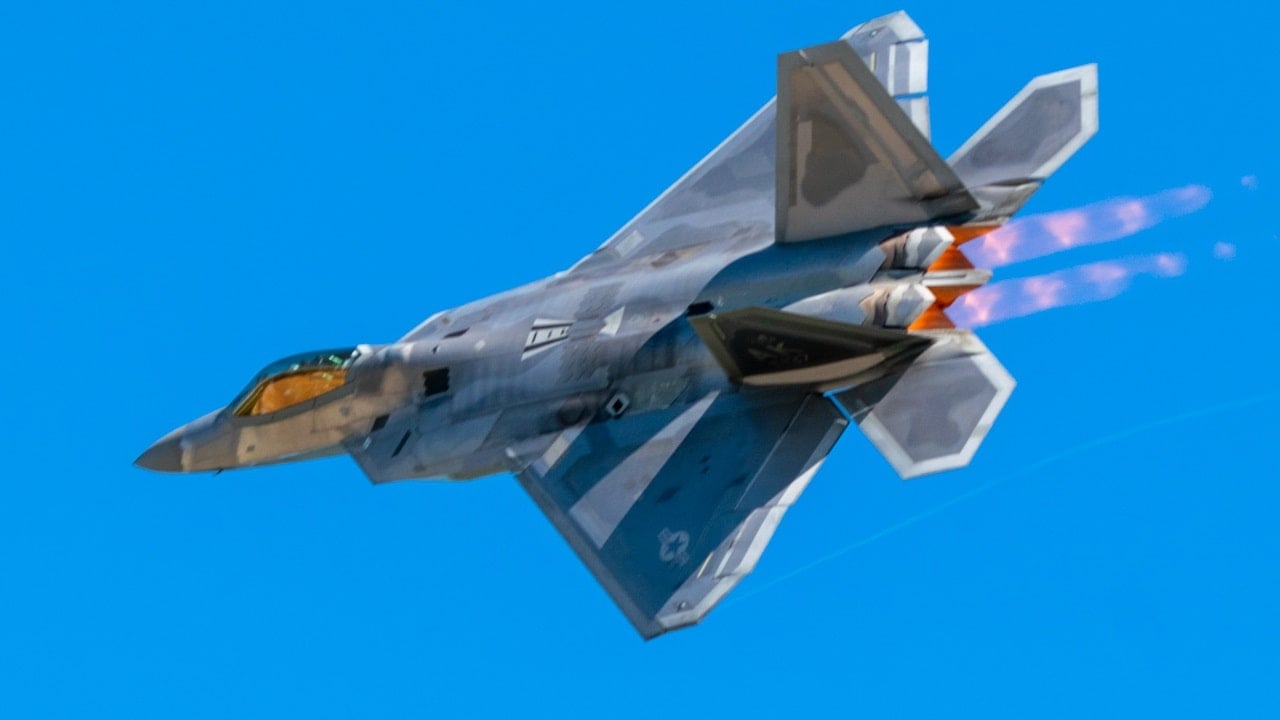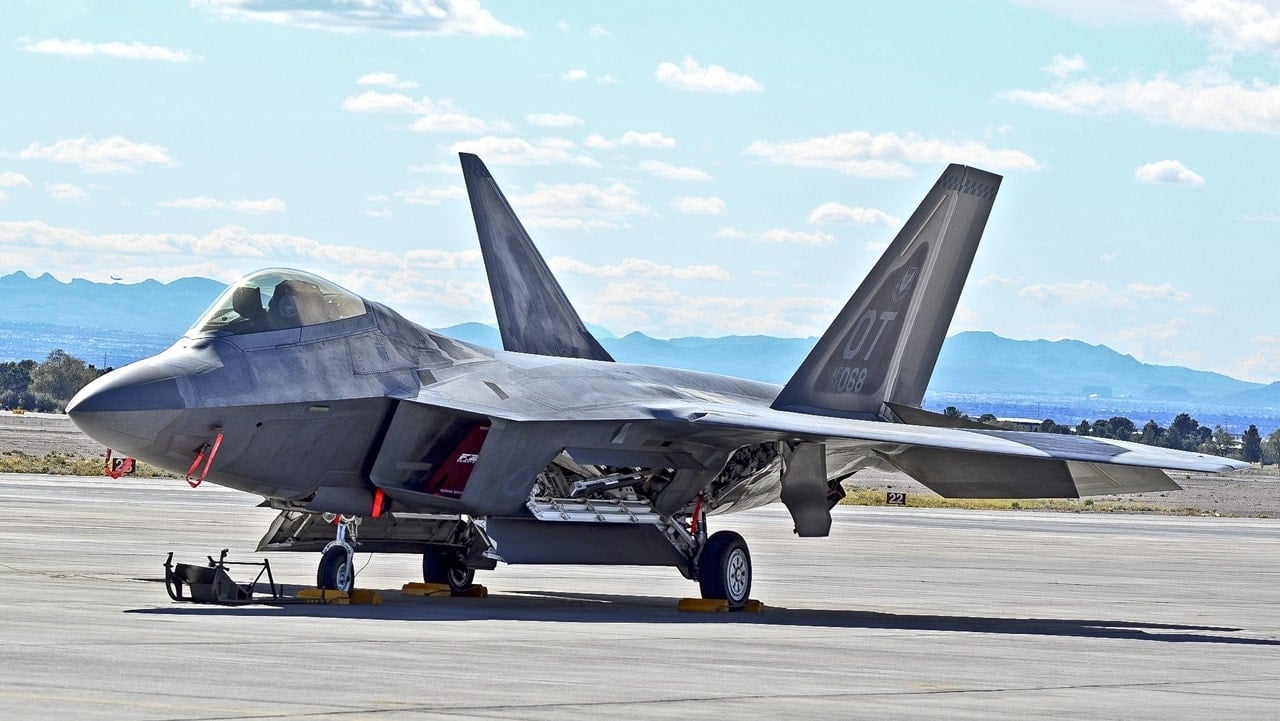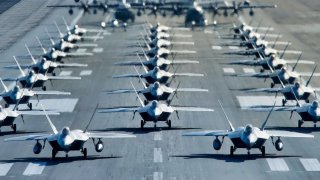The U.S. Air Force's F-22 Raptor Nightmare Has Just Begun
Despite its unmatched capabilities, the U.S. Air Force aims to retire 32 older Block 20 variants in favor of the Next Generation Air Dominance (NGAD) program, facing opposition from Congress. Many argue for upgrading all F-22s to maintain U.S. air superiority in a chaotic global landscape.
Summary and Key Points: The F-22A Raptor, celebrated as the greatest warplane, marks 25 years and 500,000 flight hours.

-Despite its unmatched capabilities, the U.S. Air Force aims to retire 32 older Block 20 variants in favor of the Next Generation Air Dominance (NGAD) program, facing opposition from Congress. In a chaotic global landscape, many argue for upgrading all F-22s to maintain U.S. air superiority.
-Critics warn that retiring any Raptors weakens military readiness amid rising geopolitical threats.
The F-22 Raptor Mistake: Why Retire Such a Great Fighter?
The F-22A Raptor is the greatest warplane ever built. This is not merely opinion. It is verifiable fact. And, like most valuable items, these birds get better with age. Indeed, 25 years after the F-22 was introduced in service to the United States Air Force, the fleet has reached a combined 500,000 flight hours.
This is a historic milestone.
After 25 years and the collapse of America’s unipolar world order into multipolarity in which there are at least two other high-tech, near-peer great rivals (China and Russia) to the United States, the F-22 remains the best warplane in the world.
It's strange that this milestone happened at the same time that the Air Force as an institution, despite their public comments to the contrary, appears committed to retiring the F-22 in favor of their ill-fated and utterly unnecessary Next Generation Air Dominance (NGAD) program (this will include a manned sixth-generation warplane plus a fleet of high-tech, next-level drones to augment the capabilities of the proposed manned fighter).
The Air Force is dipping their toes in the sad pool of divestment from the F-22. Claiming that they only seek to retire 32 of the oldest variants of the plane, the Block 20, which have not been upgraded since first entering service and are used as training planes for future F-22 pilots, the Air Force has been rebuffed by an understandably recalcitrant Congress.
The fear among elected leaders is that, if the Air Force cuts its older Block 20 F-22s, how will they train the next generation of Raptor pilots?
In a More Dangerous World, the Air Force Needs the F-22
More importantly, the world is more chaotic and dangerous for the US than it has been in decades. At a time when the United States military, despite its elephantine defense budget, is more strained than it has ever been. America needs whatever weapons system—any advantage—it can get, especially in the age of broken deterrence.
The F-22 is one of the decisive advantages that the military has. Not only should there be no retirements of these advanced birds (even the Block 20 is more advanced than most birds), the older systems should be upgraded to the hilt.
Indeed, the Air Force has slowly started to respond to these calls from Congress to save as many Raptors as they can and to make them more lethal. Toward that end, USAF Gen. Mark Kelly, who serves as Commander of Air Combat Command, revealed artwork the Congress in 2023 that much of the Raptor fleet would be upgraded with stealthier external fuel tanks, two underwing faceted pods, and an unknown air-to-air missile.
According to Stefano D’urso of The Aviationist, “The two pods installed under the outer underwing hardpoints have already been spotted during flight testing on an F-22 at the Air Force’s Plant 42 facility in Palmdale, California, in February 2022.”
Save Our Raptors
Despite the investment in upgrading the bulk of the F-22 fleet, the 32 Block 20s remain on the Air Force’s chopping block, only receiving a stay of execution for as long as an easily distracted (and manipulated) Congress stays the Air Force’s hand. But the bureaucracy has deemed that those Block 20s are irrelevant—even though they would otherwise lack sufficient training craft without them.
What’s more, given the threat environment the United States faces, the collapsing situation geopolitically, the pending debt crisis that looms over us all, and the decrepit state of the US military, it defies belief that the Air Force would seek to retire any of the F-22 fleet.
Rumor has it that Northrop Grumman informed the Air Force (without conducting any significant evidentiary investigations into the matter) that upgrading the Block 20s would take 15 years and cost over $3 billion.

For all the waste and graft that routinely occurs in America’s byzantine defense bureaucracy, paying any price to ensure all of America’s F-22s are in top fighting form for the likely world war that is coming soon seems like a worth investment. Alas, the Pentagon—like the rest of America’s establishment institutions, both in Washington and elsewhere—is completely out-of-touch with reality.
Eventually, the bureaucracy will get what it wants: it will kill the F-22. But that bureaucracy will find replacing it with their mythical wonder plane, the NGAD, will never bear the fruit that they’ve been promised by America’s always ravenous defense contractors.

Author Experience and Expertise: Brandon J. Weichert
Brandon J. Weichert, a National Interest national security analyst, is a former Congressional staffer and geopolitical analyst who is a contributor at The Washington Times, the Asia Times, and The-Pipeline. He is the author of Winning Space: How America Remains a Superpower, Biohacked: China’s Race to Control Life, and The Shadow War: Iran’s Quest for Supremacy. His next book, A Disaster of Our Own Making: How the West Lost Ukraine, is due October 22 from Encounter Books. Weichert can be followed via Twitter @WeTheBrandon.
All images are Creative Commons or Shutterstock.


